Kelly Jensen's Blog, page 93
January 27, 2015
I Don't Get the Hype
Like a lot of readers, I fall prey to the hype machine every now and then. A few of these books - hyped by publicists, readers, critics, or all three - have become some of my favorite reads: Cinder, Code Name Verity, Grave Mercy.
But some of them will leave me scratching my head, wondering what I missed that everyone else saw. Below are a few semi-recent reads with a lot of buzz that just didn't work for me. What hyped books didn't work for you?
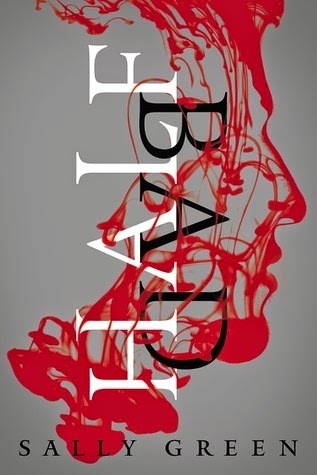
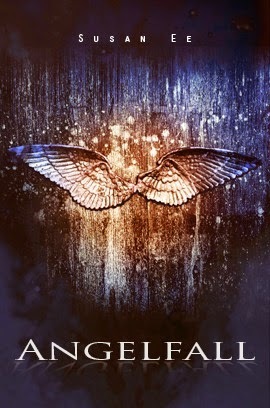
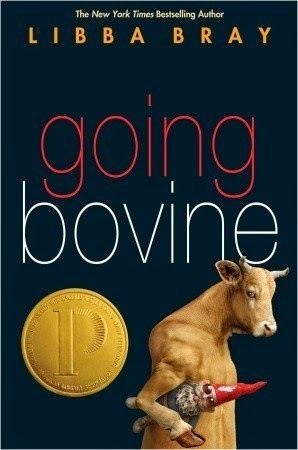
Half Bad by Sally Green
This was a Cybils nominee and I listened to it because it had been getting great reviews from trade journals and lots of praise from places like Time Magazine and the New York Times. It was also highly praised in England, where it was first published. It's about a magical culture that has white witches and black witches - the white witches are good and the black witches are bad. The protagonist is half-code, meaning one of his parents was white one of his parents was black. Reviews praise the voice, and I agree that it's good, but the story was so nonsensical to me. I never got a full understanding of why white witches were good and black witches were bad. Their behavior didn't indicate anything of the sort, either subtly or cut-and-dry (aside from the Big Bad, Marcus). And I don't think that was intentional; it reads more like a sloppy oversimplification for the sake of story, one that doesn't work. As a result I wasn't able to buy into the premise at all. I'm still flummoxed by this one many weeks after finishing it, and bemused that so many people seem to love it.
Angelfall by Susan Ee
This was a Cybils finalist and a huge self-publishing success (it got picked up by Amazon publishing, along with its sequels). I thought the story - about killer angels and the girl who gets caught up in their war - was a winner, but the writing was so poor. It was pretty painful to read and I wouldn't have finished it if it weren't a requirement for me to do so.
Going Bovine by Libba Bray
This Printz winner is divisive, but I honestly don't know what the judges see in it. This was also one that I listened to on audio. It was rambling, extremely long, mostly incoherent, and bereft of meaning or depth. Deliberate confusion does not equal literary merit. Here's my original Goodreads review from 2010 and I stand by it: Pretty terrible. I can think of only two possible things that might have made me enjoy this book: a narrator who was able to infuse some spirit into all the wackiness instead of just sounding sarcastic all the time; or me having read Don Quixote, because clearly I have missed something. I thought the book would never end.






 Related StoriesA Couple of Quick ReviewsHardcover to Paperback Makeovers: 6+ Changes To ConsiderCover Reveal: The Life and Death of Zebulon Finch, Volume 1: At the Edge of Empire by Daniel Kraus
Related StoriesA Couple of Quick ReviewsHardcover to Paperback Makeovers: 6+ Changes To ConsiderCover Reveal: The Life and Death of Zebulon Finch, Volume 1: At the Edge of Empire by Daniel Kraus
But some of them will leave me scratching my head, wondering what I missed that everyone else saw. Below are a few semi-recent reads with a lot of buzz that just didn't work for me. What hyped books didn't work for you?



Half Bad by Sally Green
This was a Cybils nominee and I listened to it because it had been getting great reviews from trade journals and lots of praise from places like Time Magazine and the New York Times. It was also highly praised in England, where it was first published. It's about a magical culture that has white witches and black witches - the white witches are good and the black witches are bad. The protagonist is half-code, meaning one of his parents was white one of his parents was black. Reviews praise the voice, and I agree that it's good, but the story was so nonsensical to me. I never got a full understanding of why white witches were good and black witches were bad. Their behavior didn't indicate anything of the sort, either subtly or cut-and-dry (aside from the Big Bad, Marcus). And I don't think that was intentional; it reads more like a sloppy oversimplification for the sake of story, one that doesn't work. As a result I wasn't able to buy into the premise at all. I'm still flummoxed by this one many weeks after finishing it, and bemused that so many people seem to love it.
Angelfall by Susan Ee
This was a Cybils finalist and a huge self-publishing success (it got picked up by Amazon publishing, along with its sequels). I thought the story - about killer angels and the girl who gets caught up in their war - was a winner, but the writing was so poor. It was pretty painful to read and I wouldn't have finished it if it weren't a requirement for me to do so.
Going Bovine by Libba Bray
This Printz winner is divisive, but I honestly don't know what the judges see in it. This was also one that I listened to on audio. It was rambling, extremely long, mostly incoherent, and bereft of meaning or depth. Deliberate confusion does not equal literary merit. Here's my original Goodreads review from 2010 and I stand by it: Pretty terrible. I can think of only two possible things that might have made me enjoy this book: a narrator who was able to infuse some spirit into all the wackiness instead of just sounding sarcastic all the time; or me having read Don Quixote, because clearly I have missed something. I thought the book would never end.







 Related StoriesA Couple of Quick ReviewsHardcover to Paperback Makeovers: 6+ Changes To ConsiderCover Reveal: The Life and Death of Zebulon Finch, Volume 1: At the Edge of Empire by Daniel Kraus
Related StoriesA Couple of Quick ReviewsHardcover to Paperback Makeovers: 6+ Changes To ConsiderCover Reveal: The Life and Death of Zebulon Finch, Volume 1: At the Edge of Empire by Daniel Kraus
Published on January 27, 2015 22:00
January 26, 2015
A Couple of Quick Reviews
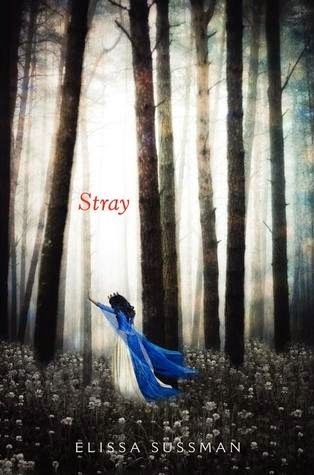
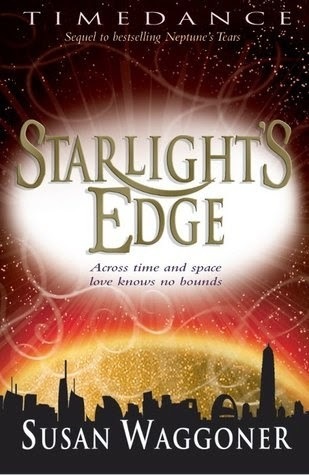
Stray by Elissa Sussman
Elissa Sussman’s debut novel reworks the Cinderella story in a pretty unique way. Rather than focus on the orphan girl or her stepsisters, Stray focuses on the fairy godmother. In Sussman’s world, young ladies are to keep to The Path – a strict set of rules for behavior – and if they don’t, they’re exiled. All girls have some level of magic within them, but The Path mandates that they exercise tremendous control over it and basically never use it. Aislynn, unfortunately, can’t keep her magic contained, and at the ball where she hopes to meet a prince and fall in love, she loses control. She’s sent a school to learn how to be a Fairy Godmother to some other princess, a school where The Path is enforced even more strictly. It’s Aislynn’s last chance. If she fails at this task, she’ll be exiled – she’ll be a stray.
I really liked the premise of the book, and thought the main idea behind The Path – that girls must always restrain what makes them unique, what makes them magical – was an interesting one that rings true even in our own non-magical world. Magic is a fantastic metaphor for so many things: girls’ voices or bodies or talents or smarts or humor or anything else that might make men uncomfortable, and therefore must be locked away. I also liked the twist on the fairy godmother, which was quite creative and not something I’d seen before.
There were also some pretty major problems: sketchy world-building (I never quite understood how the magic system worked), a lot of loose ends that just seem dropped rather than deliberately unresolved, and rough, unpolished writing. Stray has some great ideas, but I don’t think anyone would be surprised it’s a debut. Still, the faults don’t completely outweigh the good stuff; this is a worthwhile read. Recommended for readers looking for feminist fantasy or fairy tale re-tellings.
Review copy provided by a friend.
Starlight's Edge by Susan Waggoner
I am such a sucker for alien books, so I was immediately drawn to Susan Waggoner’s first novel in this series, Neptune’s Tears . Though it had a terrific concept, the book as a whole was pretty mediocre. And yet, there I found myself several months later, reading the sequel, eager to find out what happened next to the characters. That’s the problem (can you call it a problem?) with books with great ideas – even when they’re executed poorly, the ideas are still great.
This is a big spoiler for those of you who haven’t read the first book – it turns out the “aliens” that landed on Earth in the 23rd century were not aliens at all. They’re humans from 1,500 years in the future, sent back to rescue Earth’s literature and art before it’s mostly destroyed in a series of imminent meteor strikes. I was a bit bummed that there weren’t any aliens, but I didn’t care that much because instead I had time travel, and that’s nearly as awesome. In this sequel, Zee travels to David’s home time, leaving everything behind that she’s ever known.
There are a fair number of time travel books around in the YA world, but not many that take it as far as 1500+ years in the future. The opportunities for futuristic technology are really exciting to think about, and Waggoner does provide some cool stuff. Reading about Zee’s acclimation to this unfamiliar time is intriguing. There are other time travelers from the past and they form a sort of support group, giving the reader a window into lots of different time periods, not just Zee’s and David’s. The story takes a turn in the later part of the book, where David travels back in time to Pompeii – another idea that I loved.
The problem with this book, and with its predecessor, is that not much is fleshed out. The books are very short and there’s a lot of plot. They feel more like an outline than a novel. I never got a great feel for the characters and what made them tick. There are interesting details in both time periods, but neither feels fully-formed and alive. There’s just too much shoved into not enough pages. Still, I enjoyed the read, and it wasn’t a bad way to spend a couple of hours. Readers who can’t get enough of time travel may find this worth their time.
Book borrowed from my library.







 Related StoriesA Few Cybils Reads - Part VIIIThe Law of Loving Others by Kate AxelrodReviews: Two Recent Historical Fiction Reads
Related StoriesA Few Cybils Reads - Part VIIIThe Law of Loving Others by Kate AxelrodReviews: Two Recent Historical Fiction Reads
Published on January 26, 2015 22:00
January 25, 2015
Hardcover to Paperback Makeovers: 6+ Changes To Consider
It's a new year, and with that comes another round of cover makeovers, many of which are books that came out in hardcover last year. I've pulled together just a few of the changes I've seen popping up and I've saved a pile more for future posts.
Some of these redesigns in paperback are winners and some of them don't seem to change much about the hardcover. In some instances, maybe the hardcover is all together better. One of the more interesting trends I've noticed is where the hardcover was unique -- either a design or completely font-driven -- and the paperback makeover turns into a stock photo of a girl. It makes the paperbacks blend together, as it's hard to sometimes differentiate one girl from another on those covers, whereas a cover that has the title written across it largely or features some other memorable image just stands out more on the shelf and stands out more in my head.
Let's dig in. As usual, the original hardcovers are on the left and their paperback incarnations are on the right.
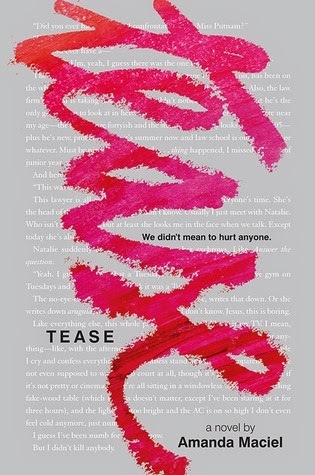
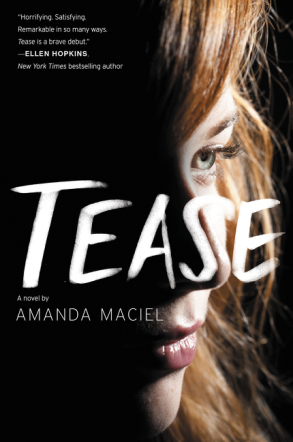
Tease by Amanda Maciel came out in hardcover last spring, and the design of this one was really noteworthy. It looks like a gray cover with the title in cursive across it, but in person, it's extremely shiny. Both the silver-y background and the pink-red title text pop in the treatment of the hardcover design.
The paperback, out April 28, goes in a completely different direction. The title is still the focal point of the cover, though rather than pop like it does on the hardcover, it's more subdued in white. It's also in a completely different -- and I think less effective -- font. Where the hardcover didn't include the blurb on the front cover (they were on the back), the paperback makes use of the Hopkins blurb at the top left corner. I'm not really inspired by the stock image used here at all. It looks like a million other side-profile girl faces on YA covers. It's hard for me to tell whether the new look is meant to draw a different audience or not. I can't figure out whether it's appealing to teen readers more or less, as the girl herself looks older than a teenager.
The hardcover of Tease is the better cover here, hands down. Neither cover necessarily hints at what's going on inside the book, though.


Elizabeth Scott's Heartbeat cover went through a few design tweaks before the final hardcover version appeared. Though it's a cover of a couple kissing, the way the title is treated makes this one pretty memorable. The design is eye-catching and in thinking about how this book looks face-out on a shelf, it's really appealing. The hardcover plays into the idea there's a romance in the book -- and there is -- even though the romance isn't the driving force of the novel.
And perhaps that's the reason for the paperback redesign, due out March 1. The makeover on this one goes to a stock image, and rather than play up the romance, this one plays up the grief aspect of the story. The girl is off-center, and she's looking off in the distance. Her body language is one that's sad or longing, and that fits with the story itself. Unlike the hardcover, which did everything in all capital letters, the paperback redesign went with putting everything in all lowercase letters. There's a certain understatement to that and aesthetically, it's really appealing. It's quieter. That said, the paperback is almost forgettable -- it's a girl on the cover with nothing super distinguishing or remarkable about her. It doesn't feel fresh or new.
This one is tough to call a better cover on in terms of what it tries to tell the reader about the story, but in terms of straight eye-catchiness and memorability the hardcover does it better.


Scholastic has been rolling out redesigned covers for Siobhan Vivian's backlist, and her first YA novel, A Little Friendly Advice, will be seeing the paperback makeover treatment on shelves March 31.
The hardcover for this one is straightforward and simple. This is a book about friendship and a group of girl friends, and Ruby, the main character, receives a polaroid camera for her 16th birthday. That gift translates onto the hardcover, as each of the girls are depicted in a polaroid image. There's a nice sense of each personality in the four photos, even though they're all stock photos. More, all of the girls look like they're teenagers.
The paperback maintains the feel of the hardcover, but it makes it even fresher. There are still four girls, and they all look quite similar to the original girls. But what really stands out -- and what Scholastic's done with the other redesigns of Vivian's covers -- is that these girls look like they're 16. Where the girls on the hardcover do look like teens, there's zero question about the ages of the girls on the paperback. They aren't wearing styles that are dated, either, meaning that this cover has a long shelf life ahead of it, despite being a cover with people on it. I love, too, that the main character is looking right at the reader.
While I think both covers for A Little Friendly Advice are good, the paperback is a really nice, fresh update of the original. For readers who didn't pick this one up the first time around, this will be especially appealing and exciting.
For those who haven't seen the other redesigns, here are the updated looks for Not That Kind of Girl and Same Difference .
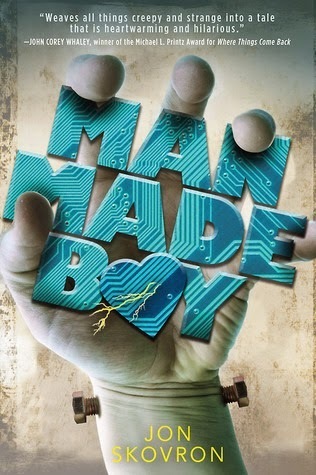

I always thought the hardcover of Jon Skovron's Man Made Boy was pretty great. I love the big Frankenstein hand, and more, I love that it's holding the title of the book itself. The font for the title is made up of circuitry, and I think the heart in place of an "O" was a clever touch. There's no need to talk boy book or girl book, but this book cover definitely has a masculine feel to it, and I think with that feel, there's appeal to guy readers especially. This cover, faced out, should go. Even with a heart on it. The heart is malfunctioning anyway.
But the paperback for Man Made Boy, due out July 7, takes what the hardcover does well and amps it up even more. In a lot of ways, this cover feels powerful because it's so understated. Where the hardcover is a bit loud, but packed with fun detail, the paperback is one cohesive image. More, though, I love how this cover undermines gender. We get that in the hardcover with the heart, but in the paperback, we get it because the image replicates doll pieces (do those push-out dolls still exist today?). Interestingly, the paperback ditches the big John Corey Whaley blurb in honor of a tag line, and it's much more effective and useful to me as a reader -- "A boy among monsters, a monster among people -- a hero above all." I know what this story is going to be about more with that than I do praise for the story.
Also interesting: the author is introduced to readers as the author of This Broken Wondrous World, which is the sequel to Man Made Boy and also features a similar cover treatment . . . but publishes nearly a month after the paperback is released. Maybe that's a placeholder, but if it isn't, that seems weird to be advertising an author by a book not yet published.
Both of these covers are pretty good, but because the sequel is going with a similar look to the paperback, maybe the paperback is a winner for cohesiveness.
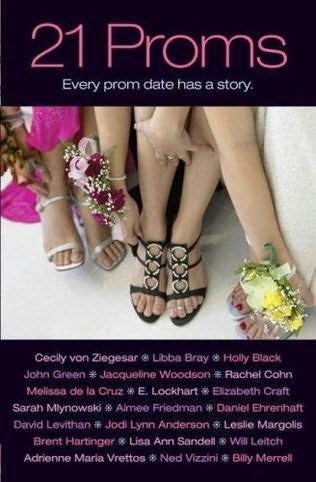
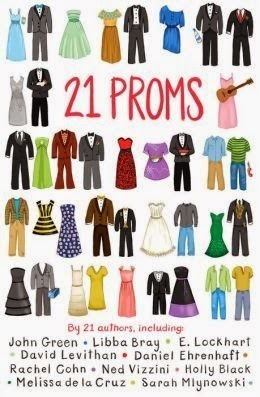
Here's a much-needed, very well-done, and memorable cover change for 21 Proms, an older anthology of short stories by 21 authors. The original cover on the left isn't bad at all. It gets right to the point of the book: these are stories about prom. The authors on the cover include all contributors, rather than just the biggest, most well-known names (at the time -- this book published in 2007). It's a stock image, and the tag line fits for the collection.
The redesign, which came out December 31, does in a bit of a different direction but without sacrificing the feel of the original or getting away from the purpose of the anthology. The cover, which is an illustration, highlights the stories within the anthology. You don't just see heterosexual couples represented here -- there are multiple gay couples, as well as a lesbian couple, as well as individuals who are without a partner, as well as groups. There's a nice range of representation on the cover, which is fitting with the content itself. One interesting and noteworthy change, though, is that because of how the illustration takes up so much of the cover, the author listing has been pared down greatly to just the biggest, most recognizable names in YA. This isn't necessarily a bad thing, but it's an interesting change nonetheless.
The paperback for 21 Proms is a winner here. It's fresh, it's contemporary, and it'll give life to this anthology for another generation of teen readers and prom story enthusiasts.

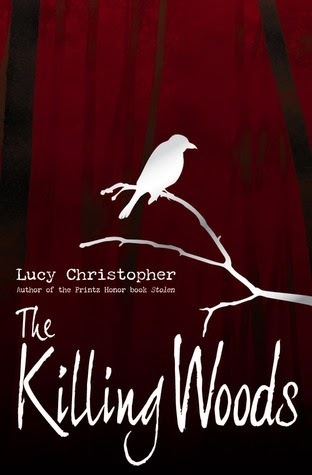
I wasn't a huge fan of the cover for Lucy Christopher's The Killing Woods when it came out last year. It's not a bad cover by any means, but it's kind of forgettable amid a ton of YA book covers featuring a shadowy person running through the woods. The tag line was kind of interesting, especially because it got to what was really going on in the story itself. This wasn't so much a book about woods which were deadly, but rather, about the deadly games played in the woods.
The paperback redesign, which came out December 31, changes the cover quite a bit, while still maintaining a sense of foreboding to it. We've got the woods in the background, but rather than being blue, they've been made into a deep red color. And rather than feature a haunting moon, there's a bird on a branch -- keeping with the fact birds are a hot cover feature, this isn't too surprising, even though it doesn't play a role in the story. What the redesign does that I love, though, is the title font. If anything, the new font is what gives this cover the sense of fear to it. I'm an even bigger fan of the typerwriter font for Christopher's name.
While neither cover knocks it out of the park, I think the paperback is a little more my taste. In terms of audience appeal, this is a tough one. The hardcover mimics a lot of adult thrillers in how it looks, which could be a draw for teen and adult readers. The paperback is quieter and more "literary," which almost makes it feel like it's reaching for more adult readers, rather than teen readers.
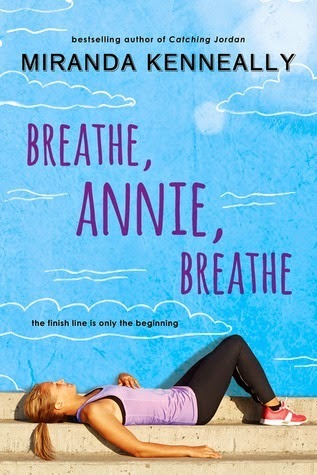

I'm less interested in talking about the paperback redesign for Miranda Kenneally's Breathe, Annie, Breathe than I am about the fact this is the fourth incarnation of this book's cover. The hardcover, on the left, came about after two previous designs were nixed after being revealed. Here's what the two original-but-ditched hardcover designs:
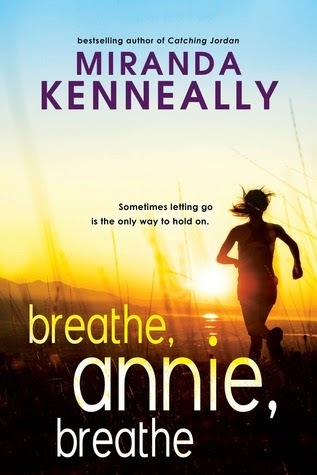

After seeing so many designs of this one, my mind is muddled with which is the real one and which isn't the real one. I wonder if that's part of what drove the decision to choose yet another design for the paperback? If anything, though, the final paperback look fits with the look that the rest of the very loose "Hundred Oaks" series has going for it, with romance being what the driving image force is. If it hadn't been redesigned, it would have been the only book that was just a girl on the cover.







 Related Stories2015 YA Book Cover Trends: Part II2015 YA Book Cover Trends: Part IFabulously Diverse YA Book Covers We Should See More Often
Related Stories2015 YA Book Cover Trends: Part II2015 YA Book Cover Trends: Part IFabulously Diverse YA Book Covers We Should See More Often
Some of these redesigns in paperback are winners and some of them don't seem to change much about the hardcover. In some instances, maybe the hardcover is all together better. One of the more interesting trends I've noticed is where the hardcover was unique -- either a design or completely font-driven -- and the paperback makeover turns into a stock photo of a girl. It makes the paperbacks blend together, as it's hard to sometimes differentiate one girl from another on those covers, whereas a cover that has the title written across it largely or features some other memorable image just stands out more on the shelf and stands out more in my head.
Let's dig in. As usual, the original hardcovers are on the left and their paperback incarnations are on the right.


Tease by Amanda Maciel came out in hardcover last spring, and the design of this one was really noteworthy. It looks like a gray cover with the title in cursive across it, but in person, it's extremely shiny. Both the silver-y background and the pink-red title text pop in the treatment of the hardcover design.
The paperback, out April 28, goes in a completely different direction. The title is still the focal point of the cover, though rather than pop like it does on the hardcover, it's more subdued in white. It's also in a completely different -- and I think less effective -- font. Where the hardcover didn't include the blurb on the front cover (they were on the back), the paperback makes use of the Hopkins blurb at the top left corner. I'm not really inspired by the stock image used here at all. It looks like a million other side-profile girl faces on YA covers. It's hard for me to tell whether the new look is meant to draw a different audience or not. I can't figure out whether it's appealing to teen readers more or less, as the girl herself looks older than a teenager.
The hardcover of Tease is the better cover here, hands down. Neither cover necessarily hints at what's going on inside the book, though.


Elizabeth Scott's Heartbeat cover went through a few design tweaks before the final hardcover version appeared. Though it's a cover of a couple kissing, the way the title is treated makes this one pretty memorable. The design is eye-catching and in thinking about how this book looks face-out on a shelf, it's really appealing. The hardcover plays into the idea there's a romance in the book -- and there is -- even though the romance isn't the driving force of the novel.
And perhaps that's the reason for the paperback redesign, due out March 1. The makeover on this one goes to a stock image, and rather than play up the romance, this one plays up the grief aspect of the story. The girl is off-center, and she's looking off in the distance. Her body language is one that's sad or longing, and that fits with the story itself. Unlike the hardcover, which did everything in all capital letters, the paperback redesign went with putting everything in all lowercase letters. There's a certain understatement to that and aesthetically, it's really appealing. It's quieter. That said, the paperback is almost forgettable -- it's a girl on the cover with nothing super distinguishing or remarkable about her. It doesn't feel fresh or new.
This one is tough to call a better cover on in terms of what it tries to tell the reader about the story, but in terms of straight eye-catchiness and memorability the hardcover does it better.


Scholastic has been rolling out redesigned covers for Siobhan Vivian's backlist, and her first YA novel, A Little Friendly Advice, will be seeing the paperback makeover treatment on shelves March 31.
The hardcover for this one is straightforward and simple. This is a book about friendship and a group of girl friends, and Ruby, the main character, receives a polaroid camera for her 16th birthday. That gift translates onto the hardcover, as each of the girls are depicted in a polaroid image. There's a nice sense of each personality in the four photos, even though they're all stock photos. More, all of the girls look like they're teenagers.
The paperback maintains the feel of the hardcover, but it makes it even fresher. There are still four girls, and they all look quite similar to the original girls. But what really stands out -- and what Scholastic's done with the other redesigns of Vivian's covers -- is that these girls look like they're 16. Where the girls on the hardcover do look like teens, there's zero question about the ages of the girls on the paperback. They aren't wearing styles that are dated, either, meaning that this cover has a long shelf life ahead of it, despite being a cover with people on it. I love, too, that the main character is looking right at the reader.
While I think both covers for A Little Friendly Advice are good, the paperback is a really nice, fresh update of the original. For readers who didn't pick this one up the first time around, this will be especially appealing and exciting.
For those who haven't seen the other redesigns, here are the updated looks for Not That Kind of Girl and Same Difference .


I always thought the hardcover of Jon Skovron's Man Made Boy was pretty great. I love the big Frankenstein hand, and more, I love that it's holding the title of the book itself. The font for the title is made up of circuitry, and I think the heart in place of an "O" was a clever touch. There's no need to talk boy book or girl book, but this book cover definitely has a masculine feel to it, and I think with that feel, there's appeal to guy readers especially. This cover, faced out, should go. Even with a heart on it. The heart is malfunctioning anyway.
But the paperback for Man Made Boy, due out July 7, takes what the hardcover does well and amps it up even more. In a lot of ways, this cover feels powerful because it's so understated. Where the hardcover is a bit loud, but packed with fun detail, the paperback is one cohesive image. More, though, I love how this cover undermines gender. We get that in the hardcover with the heart, but in the paperback, we get it because the image replicates doll pieces (do those push-out dolls still exist today?). Interestingly, the paperback ditches the big John Corey Whaley blurb in honor of a tag line, and it's much more effective and useful to me as a reader -- "A boy among monsters, a monster among people -- a hero above all." I know what this story is going to be about more with that than I do praise for the story.
Also interesting: the author is introduced to readers as the author of This Broken Wondrous World, which is the sequel to Man Made Boy and also features a similar cover treatment . . . but publishes nearly a month after the paperback is released. Maybe that's a placeholder, but if it isn't, that seems weird to be advertising an author by a book not yet published.
Both of these covers are pretty good, but because the sequel is going with a similar look to the paperback, maybe the paperback is a winner for cohesiveness.


Here's a much-needed, very well-done, and memorable cover change for 21 Proms, an older anthology of short stories by 21 authors. The original cover on the left isn't bad at all. It gets right to the point of the book: these are stories about prom. The authors on the cover include all contributors, rather than just the biggest, most well-known names (at the time -- this book published in 2007). It's a stock image, and the tag line fits for the collection.
The redesign, which came out December 31, does in a bit of a different direction but without sacrificing the feel of the original or getting away from the purpose of the anthology. The cover, which is an illustration, highlights the stories within the anthology. You don't just see heterosexual couples represented here -- there are multiple gay couples, as well as a lesbian couple, as well as individuals who are without a partner, as well as groups. There's a nice range of representation on the cover, which is fitting with the content itself. One interesting and noteworthy change, though, is that because of how the illustration takes up so much of the cover, the author listing has been pared down greatly to just the biggest, most recognizable names in YA. This isn't necessarily a bad thing, but it's an interesting change nonetheless.
The paperback for 21 Proms is a winner here. It's fresh, it's contemporary, and it'll give life to this anthology for another generation of teen readers and prom story enthusiasts.


I wasn't a huge fan of the cover for Lucy Christopher's The Killing Woods when it came out last year. It's not a bad cover by any means, but it's kind of forgettable amid a ton of YA book covers featuring a shadowy person running through the woods. The tag line was kind of interesting, especially because it got to what was really going on in the story itself. This wasn't so much a book about woods which were deadly, but rather, about the deadly games played in the woods.
The paperback redesign, which came out December 31, changes the cover quite a bit, while still maintaining a sense of foreboding to it. We've got the woods in the background, but rather than being blue, they've been made into a deep red color. And rather than feature a haunting moon, there's a bird on a branch -- keeping with the fact birds are a hot cover feature, this isn't too surprising, even though it doesn't play a role in the story. What the redesign does that I love, though, is the title font. If anything, the new font is what gives this cover the sense of fear to it. I'm an even bigger fan of the typerwriter font for Christopher's name.
While neither cover knocks it out of the park, I think the paperback is a little more my taste. In terms of audience appeal, this is a tough one. The hardcover mimics a lot of adult thrillers in how it looks, which could be a draw for teen and adult readers. The paperback is quieter and more "literary," which almost makes it feel like it's reaching for more adult readers, rather than teen readers.


I'm less interested in talking about the paperback redesign for Miranda Kenneally's Breathe, Annie, Breathe than I am about the fact this is the fourth incarnation of this book's cover. The hardcover, on the left, came about after two previous designs were nixed after being revealed. Here's what the two original-but-ditched hardcover designs:


After seeing so many designs of this one, my mind is muddled with which is the real one and which isn't the real one. I wonder if that's part of what drove the decision to choose yet another design for the paperback? If anything, though, the final paperback look fits with the look that the rest of the very loose "Hundred Oaks" series has going for it, with romance being what the driving image force is. If it hadn't been redesigned, it would have been the only book that was just a girl on the cover.







 Related Stories2015 YA Book Cover Trends: Part II2015 YA Book Cover Trends: Part IFabulously Diverse YA Book Covers We Should See More Often
Related Stories2015 YA Book Cover Trends: Part II2015 YA Book Cover Trends: Part IFabulously Diverse YA Book Covers We Should See More Often
Published on January 25, 2015 22:00
January 22, 2015
This Week at Book Riot
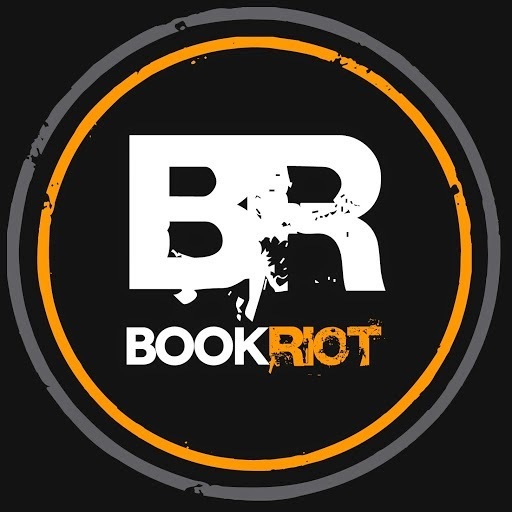
Here's a look at this week's posts over on Book Riot:
The YA Quarterly Box was officially announced! Here are details about the subscription box and how to get in on the mailing list for first-notice of when it opens for business. This week's 3 On A YA Theme is all about historical fiction in verse. I wrote a little letter to feminists about why and how 2015 is the year of the feminist YA novel.







 Related StoriesThis Week at Book RiotThis Week Around The Web
Related StoriesThis Week at Book RiotThis Week Around The Web
Published on January 22, 2015 22:00
Cover Reveal: The Death and Life of Zebulon Finch, Volume 1: At the Edge of Empire by Daniel Kraus
We have never done a cover reveal before on Stacked, but we're doing one today for a book that sounds spectacular. I've been enjoying Daniel Kraus's books, and I'm really looking forward to what he's got in store in 2015 for us. First up is
Trollhunters
, a horror novel out June 30 and co-written by Guillermo del Toro.
Then in the fall, October to be exact, the first book in Kraus's Zebulon Finch series will hit shelves from Simon & Schuster BFYR. There has been very little said about this duology so far, aside from its announcement. But we're going to change that.
Here's what you should know about The Death and Life of Zebulon Finch, Volume 1: At The Edge of Empire.
May 7, 1896. Dusk. A swaggering seventeen-year-old gangster named Zebulon Finch is gunned down on the shores of Lake Michigan. But after mere minutes in the void, he is mysteriously resurrected. His second life will be nothing like his first. Zebulon's new existence begins as a sideshow attraction in a traveling medicine show. From there, he will be poked and prodded by a scientist obsessed with mastering the secrets of death. He will fight in the trenches of World War I. He will run from his nightmares—and from poverty—in Depression-era New York City. And he will become the companion of the most beautiful woman in Hollywood.Love, hate, hope, and horror—Zebulon finds them. But will he ever find redemption?Ambitious and heartbreaking, The Death & Life of Zebulon Finch, Volume 1: At the Edge of Empire is the epic saga of what it means to be human in a world so often lacking in humanity.
Now, the cover, designed by Ken Taylor:

If nothing else, this cover is sure as hell going to stand out on a shelf. It's got a real steampunk-time travel feel to it, and it just looks like a cover of a book that is going to be huge and expansive. We've got a gas mask, a trilby hat, rats, and an overall feeling of something out of Metropolis . The bottom of the cover, behind where the boy is walking, really gives it that feel for me. There's also definitely an Octavian Nothing vibe from the cover, though for an older teen audience.
I'm looking forward to this duology because it sounds like not only something I've never seen before, but I know it'll be good because Kraus's work has yet to disappoint me. And don't worry about waiting too long after finishing the first book for the sequel -- it'll be out in October 2016.
 DANIEL KRAUS:www.danielkraus.com
DANIEL KRAUS:www.danielkraus.com
DANIEL KRAUS is a Chicago-based writer, editor, and filmmaker. His debut novel, The Monster Variations, was selected to New York Public Library’s “100 Best Stuff for Teens.” Fangoria called his Bram Stoker-finalist, Odyssey Award-winning second novel, Rotters, “a new horror classic.” Scowler was a Junior Library Guild selection, a YALSA Best Fiction for Young Adults, and the winner of the Odyssey Award.
Upcoming novels include Trollhunters (2015), co-written with filmmaker Guillermo del Toro; and The Death & Life of Zebulon Finch, Volume 2 (2016).
Kraus has written regularly for such magazines as Cosmopolitan, Playboy, Maxim, and Salon.com. He is the director of six feature films, including Sheriff (2006 season premiere of PBS’s Emmy-winning “Independent Lens”) and Musician (2007 New York Times Critics’ Pick). Visit him at www.danielkraus.com.
KEN TAYLOR:www.kentaylor.com.au
Melbourne-based illustrator and designer Ken Taylor is known throughout the world for his striking rock and movie posters. Ken began by designing posters and album artwork for many Australian bands, including You Am I, The Beasts of Bourbon, and Crowded House. As word of his talent spread, he took on international clients, creating artwork for bands such as Pearl Jam, Nine Inch Nails, Kings of Leon, Bob Dylan, and The Rolling Stones. Over the past few years, he has become well-known for his limited edition silkscreened movie posters, working with some of the world’s biggest movie licenses. Ken won the Desktop Create Award for Best illustration in both 2007 and 2009. He has had exhibitions in Los Angeles (2012) and Austin (2013) and was also part of SXSW Flatsock. Ken continues to work with bands both locally and internationally and is represented by Drawing Book.The Death and Life of Zebulon Finch, Volume 1: At the Edge of Empire is his first book cover.







 Related StoriesLiar, Liar, Pants on Fire: YA Books With A Lot of LyingJanuary Debut YA NovelsThe Law of Loving Others by Kate Axelrod
Related StoriesLiar, Liar, Pants on Fire: YA Books With A Lot of LyingJanuary Debut YA NovelsThe Law of Loving Others by Kate Axelrod
Then in the fall, October to be exact, the first book in Kraus's Zebulon Finch series will hit shelves from Simon & Schuster BFYR. There has been very little said about this duology so far, aside from its announcement. But we're going to change that.
Here's what you should know about The Death and Life of Zebulon Finch, Volume 1: At The Edge of Empire.
May 7, 1896. Dusk. A swaggering seventeen-year-old gangster named Zebulon Finch is gunned down on the shores of Lake Michigan. But after mere minutes in the void, he is mysteriously resurrected. His second life will be nothing like his first. Zebulon's new existence begins as a sideshow attraction in a traveling medicine show. From there, he will be poked and prodded by a scientist obsessed with mastering the secrets of death. He will fight in the trenches of World War I. He will run from his nightmares—and from poverty—in Depression-era New York City. And he will become the companion of the most beautiful woman in Hollywood.Love, hate, hope, and horror—Zebulon finds them. But will he ever find redemption?Ambitious and heartbreaking, The Death & Life of Zebulon Finch, Volume 1: At the Edge of Empire is the epic saga of what it means to be human in a world so often lacking in humanity.
Now, the cover, designed by Ken Taylor:

If nothing else, this cover is sure as hell going to stand out on a shelf. It's got a real steampunk-time travel feel to it, and it just looks like a cover of a book that is going to be huge and expansive. We've got a gas mask, a trilby hat, rats, and an overall feeling of something out of Metropolis . The bottom of the cover, behind where the boy is walking, really gives it that feel for me. There's also definitely an Octavian Nothing vibe from the cover, though for an older teen audience.
I'm looking forward to this duology because it sounds like not only something I've never seen before, but I know it'll be good because Kraus's work has yet to disappoint me. And don't worry about waiting too long after finishing the first book for the sequel -- it'll be out in October 2016.
 DANIEL KRAUS:www.danielkraus.com
DANIEL KRAUS:www.danielkraus.comDANIEL KRAUS is a Chicago-based writer, editor, and filmmaker. His debut novel, The Monster Variations, was selected to New York Public Library’s “100 Best Stuff for Teens.” Fangoria called his Bram Stoker-finalist, Odyssey Award-winning second novel, Rotters, “a new horror classic.” Scowler was a Junior Library Guild selection, a YALSA Best Fiction for Young Adults, and the winner of the Odyssey Award.
Upcoming novels include Trollhunters (2015), co-written with filmmaker Guillermo del Toro; and The Death & Life of Zebulon Finch, Volume 2 (2016).
Kraus has written regularly for such magazines as Cosmopolitan, Playboy, Maxim, and Salon.com. He is the director of six feature films, including Sheriff (2006 season premiere of PBS’s Emmy-winning “Independent Lens”) and Musician (2007 New York Times Critics’ Pick). Visit him at www.danielkraus.com.
KEN TAYLOR:www.kentaylor.com.au
Melbourne-based illustrator and designer Ken Taylor is known throughout the world for his striking rock and movie posters. Ken began by designing posters and album artwork for many Australian bands, including You Am I, The Beasts of Bourbon, and Crowded House. As word of his talent spread, he took on international clients, creating artwork for bands such as Pearl Jam, Nine Inch Nails, Kings of Leon, Bob Dylan, and The Rolling Stones. Over the past few years, he has become well-known for his limited edition silkscreened movie posters, working with some of the world’s biggest movie licenses. Ken won the Desktop Create Award for Best illustration in both 2007 and 2009. He has had exhibitions in Los Angeles (2012) and Austin (2013) and was also part of SXSW Flatsock. Ken continues to work with bands both locally and internationally and is represented by Drawing Book.The Death and Life of Zebulon Finch, Volume 1: At the Edge of Empire is his first book cover.







 Related StoriesLiar, Liar, Pants on Fire: YA Books With A Lot of LyingJanuary Debut YA NovelsThe Law of Loving Others by Kate Axelrod
Related StoriesLiar, Liar, Pants on Fire: YA Books With A Lot of LyingJanuary Debut YA NovelsThe Law of Loving Others by Kate Axelrod
Published on January 22, 2015 08:00
January 21, 2015
The Law of Loving Others by Kate Axelrod
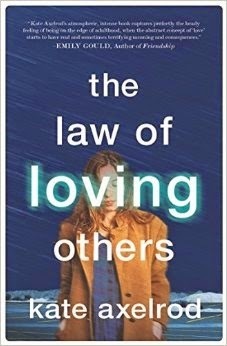 Sometimes, you read a book and it hits all of the notes perfectly. Other times, you read a book and it misses them.
Sometimes, you read a book and it hits all of the notes perfectly. Other times, you read a book and it misses them.The Law of Loving Others falls more into the second category.
Emma is a high school junior at a boarding school in Pennsylvania. The story takes place during the twoish weeks of winter break, when she and boyfriend Daniel head back to their homes in the New York City suburbs and the city itself respectively. When Emma arrives home, she's greeted by her mother who isn't entirely the person she remembers her to be. Her mom's making strange statements about her clothing not being the stuff she owns and that the world around her is out to get her.
Before long, Emma's mother is sent to the hospital, then on to an assisted living medical facility for treatment of a bad bout with schizophrenia. It's a disease she's had her entire life, but it's entered into a flare up unlike any Emma has seen before.
Throughout her mother's time away, Emma finds herself questioning the strength of her relationship with Daniel. He's not there in the way she thinks he should be. She wants him to always be waiting for her, to always be reassuring her that he loves her, that no matter what she needs, he'll be there waiting. He does love her, and he is there for her, but as Emma comes to figure out, he's not a mind reader and he can't possibly offer more to Emma than he already is. It's Emma who complicates things more when she begins to spend time with Philip, someone she knows through a friend and whose brother is also at the same facility her mother is at. It took no time for them to dive into a very physical relationship, borne from their shared desires to be close to someone in their grief and sadness.
While Emma navigates her romantic life, as well as the challenges of her family life, something else is scratching at the back of her mind, too: what if she finds herself experiencing the symptoms of schizophrenia? Can someone love her if she, too, becomes mentally unwell? Her paranoia grows throughout, as she senses the anxiety in her own life becoming more and more problematic. Thinking about this makes her want to know more about the relationship between her own mother and father. How do they operate? How did they operate when her illness had been bad before she was born? This thinking is one of the things she can't separate from her own relationship with Daniel.
Axelrod's debut novel has a lot to enjoy. In many ways, it's the romantic relationship in this book that's most memorable and noteworthy. Emma's desire to know how relationships work -- as well as her own decisions in testing hers -- are realistic and explored in a way that I haven't seen in YA. There's meat to how she wonders about her own parents and about the way relationships ebb and flow. Likewise, the manner in which Emma faces her own fears about her own mental status and the potential future of her own health are at times tough to read. With schizophrenia having an average age of diagnosis of 25, Emma knows she's not out of the woods yet.
That said, many things in this book didn't work.
This isn't a YA novel for teen readers. While it'll appeal to teen readers, it's a YA novel for adult readers or, more realistically, it's an adult novel with teen main characters. The writing feels so distant and removed, and the ways that the teens are rendered here are fantasies. The freedoms they have at boarding school -- as told through reminiscent, dream-like flashbacks -- are hard to believe. These teens read like college juniors attending a college, rather than high school juniors attending a high school. There are drug parties, a wildly deep college course catalog and opportunities for study, plenty of drinking, and almost too much freedom from any authority. While Emma has her parents present in the story, the setting at boarding school felt far too convenient. Not only was it convenient, but it permitted that dreamlike fantasy and more, it highlighted her privilege. Sure, her dad was a teacher at a great local school, but it was her parents who encouraged her to attend this school. Sure, it was so she wouldn't have to potentially face her mother's illness when it hit (though she did anyway). But ultimately, it was flimsy and cardboard and far more about developing a nice fantasy world for her to have when she had to face the tough realities of her home life and her relationship with Daniel.
There's quite a bit of sex and discussion of sex in this book, and none of it feels authentic to the teen experience. Emma has had sex with three people, and while that's believable, the fact none of her narrative experiences involve an ounce of awkwardness, messiness, or humor is hard to swallow. Both Daniel and Phil know how to get her off quickly and painlessly, and the sex becomes a balm to her. It's weird because teen sex -- even sex in adulthood -- isn't this easy or carefree or hygienic. More, the way that Emma narrates a sexual encounter with Daniel is well beyond her maturity or experience at 16 (maybe 17) years old.
From the onset, I could see the strings being pulled. Daniel's mother was a doctor of mental health, and even at the beginning of the book, before we discover there's a problem with Emma's mother, she's offering Emma an opportunity to talk. She presses Emma, too, asking if she's feeling any anxiety, any worry, anything out of sorts herself. Then when Emma's mother is sent to the group home for therapy, it's Daniel's mom that Emma turns to. It was too easy an out, and it was too conveniently placed. While there's no denying that Emma had a big challenge in front of her and she grieved deeply, she had too many parachutes into which she could fall. There weren't enough brick walls to force her to push farther or harder.
Emma herself isn't particularly complex, nor is she particularly memorable. She's not a "likable" nor an "unlikable" character. While she does dumb things and is certainly not winning girlfriend of the year (she cheats on Daniel!), none of the consequences of those actions feel that detrimental. There are outs all over the place for her, and she lets herself have them. She left me feeling nothing toward her, which might be her downfall as a character. She's there and that's about it. One thing that did stand out about her -- and it stood out because it's a rare thing to see in YA -- is that she's ethnically Jewish.
The Law of Loving Others reminded me a lot of Nina de Gramont's The Gossip of the Starlings, even though thematically they don't have a whole lot in common. Instead, Axelrod's writing and execution felt very adult, rather than teen, and I can't figure out why this book is being marketed for YA, rather than adult. This is a romanticized, dreamy take on the teen experience, rather than a grittier, messier, truer version. It feels sanitized. While I think it has appeal to readers looking for a realistic novel about a parent struggling with mental illness, as well as a story that looks at romance through the lens of what makes a relationship work or not work, there's little that makes it stand out loudly and strongly from what else is out there. It's more of a palate cleanser: it achieves its purpose, even if it's not particularly fresh or noteworthy. This is a solid example of YA for adults that you could easily pass along to adult readers.
The Law of Loving Others is available now. Review copy received from the publisher.







 Related StoriesJanuary Debut YA NovelsReviews: Two Recent Historical Fiction ReadsReviews: Two Recent Historical Fiction Listens
Related StoriesJanuary Debut YA NovelsReviews: Two Recent Historical Fiction ReadsReviews: Two Recent Historical Fiction Listens
Published on January 21, 2015 22:00
January 20, 2015
Unfortunate Names in YA Fiction
I was flipping through a review copy of The Novice by Taran Matharu and a particular name jumped out at me: Briss. This is the not the name of the main character, but my initial reaction nonetheless was "That's unfortunate." It's not a great pick. If I were the editor of this particular book (and in my dreams, I edit all the books so no one I love ever dies), I would have put a red X through that name straightaway.
Fantasy and science fiction novels get a lot of flack for ridiculous names, sometimes earned. Briss probably isn't the worst name ever, but in its honor, I thought it would be fun to list a few other terribly unfortunate names readers have suffered through. What names would you add?
1. Po from Graceling by Kristin Cashore. Po chooses to go by Po because he thinks it's better than his given name, Greening. It's not.
2. Bitterblue from Bitterblue by Kristin Cashore. I guess her father hated her. (See what I did there?) Sorry for picking on you, Kristin.
3. Albus Severus Potter from Harry Potter and the Deathly Hallows by J. K. Rowling. Yes, it's a name with meaning, and yes, the Harry Potter series is full of some interesting name choices, but this one is doubly unfortunate because it's a poor child who is saddled with it.
4. Tookie de la Creme from Modelland by Tyra Banks. Kelly and I are still eagerly awaiting the sequel.
5. Peeta from The Hunger Games by Suzanne Collins. It's a little too on the nose that he's a baker and his name is Peeta. Incidentally, I now only refer to him as Peeta Bread. And now I want a sandwich.
6. Benedict Cumberbatch from The Hobbit. Technically middle grade, not YA, but I'm including it because I am a rebel. (That's the name of a real person, you say? Well, that's unfortunate.)





 Related StoriesReviews: Two Recent Historical Fiction ReadsLiar, Liar, Pants on Fire: YA Books With A Lot of LyingJanuary Debut YA Novels
Related StoriesReviews: Two Recent Historical Fiction ReadsLiar, Liar, Pants on Fire: YA Books With A Lot of LyingJanuary Debut YA Novels
Fantasy and science fiction novels get a lot of flack for ridiculous names, sometimes earned. Briss probably isn't the worst name ever, but in its honor, I thought it would be fun to list a few other terribly unfortunate names readers have suffered through. What names would you add?
1. Po from Graceling by Kristin Cashore. Po chooses to go by Po because he thinks it's better than his given name, Greening. It's not.
2. Bitterblue from Bitterblue by Kristin Cashore. I guess her father hated her. (See what I did there?) Sorry for picking on you, Kristin.
3. Albus Severus Potter from Harry Potter and the Deathly Hallows by J. K. Rowling. Yes, it's a name with meaning, and yes, the Harry Potter series is full of some interesting name choices, but this one is doubly unfortunate because it's a poor child who is saddled with it.
4. Tookie de la Creme from Modelland by Tyra Banks. Kelly and I are still eagerly awaiting the sequel.
5. Peeta from The Hunger Games by Suzanne Collins. It's a little too on the nose that he's a baker and his name is Peeta. Incidentally, I now only refer to him as Peeta Bread. And now I want a sandwich.
6. Benedict Cumberbatch from The Hobbit. Technically middle grade, not YA, but I'm including it because I am a rebel. (That's the name of a real person, you say? Well, that's unfortunate.)






 Related StoriesReviews: Two Recent Historical Fiction ReadsLiar, Liar, Pants on Fire: YA Books With A Lot of LyingJanuary Debut YA Novels
Related StoriesReviews: Two Recent Historical Fiction ReadsLiar, Liar, Pants on Fire: YA Books With A Lot of LyingJanuary Debut YA Novels
Published on January 20, 2015 22:00
January 19, 2015
Reviews: Two Recent Historical Fiction Reads
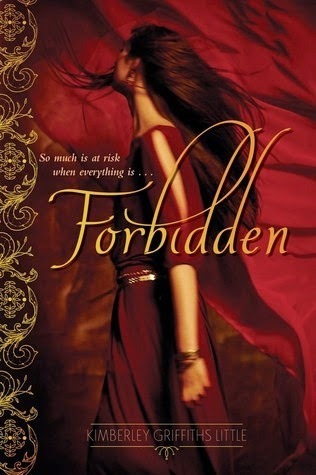
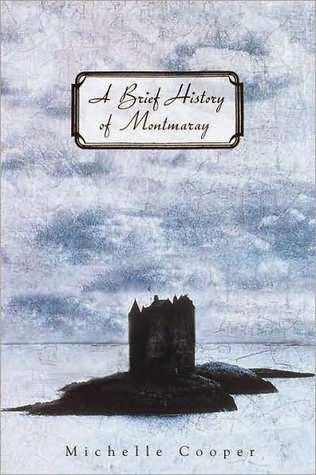
Forbidden by Kimberley Griffiths Little
I talked about this one a little in my post about the dearth of ancient historical fiction titles not set in Egypt, Greece, or Rome. This book is unique because it's set in ancient Mesopotamia, both the wide open desert and the many cities located within the region. It's the story of Jayden, a member of a nomadic tribe that travels in the desert from oasis to oasis. She's been engaged to a cousin (by friendship, not blood) since she was a little girl, and her engagement ceremony nears. The cousin, Horeb, will be king of their tribe once his father dies, making Jayden their queen. Jayden's older sister was engaged to Horeb's older brother, who died during a raid. Jayden loves the desert life, but her sister has become disenchanted with it and wants to live in one of the cities, becoming a priestess of one of the local goddesses.
The story takes a few familiar turns. Horeb is awful, as can be expected. A stranger from the southern lands - where the valuable frankincense is plentiful - shows up, gravely injured, and is healed by Jayden's tribe. The two fall in love, again not a surprise. This is the main conflict of the story - and it is a dangerous once, since Jayden is at the mercy of her father until she is married, after which she will be at the mercy of her husband.
There are interesting details about life during this time in this region - the importance of camels, the many uses of belly dance, the tribe's religion, raids on other tribes, the way women gave birth in a squatting position - but it never feels completely engrossing. Jayden's voice seems a bit naive for a girl who lives the very hard desert life. Some events also don't make sense: The men ostensibly keep a close eye on the women, but Jayden and her sister seem to go to the local city and its temple as they wish. The tribe also doesn't notice or care when one of the city girls shows up at a tribal dance, despite the tribe's mistrust of the city people. The story feels a bit meandering, particularly during the first half, which is taken up with a lot of travel and not much else. This won't win over readers looking for a terrific story, but it should be engaging enough for people interested in lesser-known times and places.
(The author states in her historical note that she deliberately did not describe her characters' skin tone, as scholars are divided on what color such people's skin tone actually was. But the cover shows a pretty light-skinned girl, which I'm sure surprises nobody.)
A Brief History of Montmaray by Michelle Cooper
I've continued my historical fiction binge with this (somewhat) older title from 2008. This is a book I've heard subdued chatter about consistently since its publication, chatter that pops up again each time a sequel is released. It's set in a fictional island country called Montmaray, located in the Atlantic Ocean near Britain and France, in 1936. The book is Sophie's diary, and it tells of her life on Montmaray with her little sister Henrietta (Henry), her crazy uncle (the king), her cousin Victoria (the king's daughter), a surly housekeeper, and the housekeeper's son Simon, whom Sophie has quite a crush on. Sophie's parents are both dead, and her older brother - the heir, since women cannot inherit the monarchy - is away at school in England. Occasionally they're visited by their friends Anthony and Julia via airplane, but for the most part, their lives are completely isolated. The other inhabitants of the island mostly died during World War I, or moved away afterward.
People tell me this has a very I Capture the Castle feel, but since I've never read that book, I can't say. It does feel a little old-fashioned, in a sweet way. It's not particularly exciting and not much happens until the end, but the journey is still interesting. The first part of the novel is very much a slice-of-life sort of story. The setting is intriguing and the relationships between the characters feel authentic (Sophie and her siblings share a secret language, and the whole family is close-knit but can also be quite prickly with each other). It's kind of incredible to think about these teenagers running around unsupervised on this tiny island that they literally rule - if that means anything when there's no one to rule over. Of course, the harder reality of their situation is also made clear: no doctors, no luxuries, and nothing to protect them against the onslaught of World War II. Then two Nazis show up on the island with unknown purpose, and the teens' somewhat sedate lives take a big turn.
Sophie's voice is great, and she's brought to life quite well by Emma Bering (I listened to it on audio). While I do think this takes a while to get going, I did immediately begin listening to the second one upon the first's end. It's a different perspective on World War II than anything I've read before.







 Related StoriesReviews: Two Recent Historical Fiction ListensOn Grief and Finding Love Unexpected: The Boy in the Black Suit by Jason Reynolds and The Carnival at Bray by Jessie Ann FoleyLiar, Liar, Pants on Fire: YA Books With A Lot of Lying
Related StoriesReviews: Two Recent Historical Fiction ListensOn Grief and Finding Love Unexpected: The Boy in the Black Suit by Jason Reynolds and The Carnival at Bray by Jessie Ann FoleyLiar, Liar, Pants on Fire: YA Books With A Lot of Lying
Published on January 19, 2015 22:00
January 18, 2015
Liar, Liar, Pants on Fire: YA Books With A Lot of Lying

It's been quite a year in lies for YA, and it appears as though it's going to continue well into 2015. Betsy Bird talked about some of the trends that will continue through this year, and one that she hits on is the idea of truth-stretching and lying, with some focus on the growth of lying in YA fiction as a means of storytelling.
One of the biggest "meets"/"for fans of" pitches I've seen in catalog copy for YA this year follows this trend as well. If you're looking for your next We Were Liars, then it seems like you'll have plenty of titles to choose from. Whether or not they're really going to be great read alikes is yet to be seen, but here are four titles off the top of my head with that pitch in their respective catalogs (links go to Goodreads, which may not reflect catalog copy):
Twisted Fate by Norah Olson -- out January 20 The Cost of All Things by Maggie Lehrman -- out May 12 Modern Monsters by Kelley York -- out June 2Pretending to Be Erica by Michelle Painchaud -- out July 21
What's interesting is that none of those books feature "lies," "liars," or "lying" in the title, which is where I've noticed an emerging trend. How many books in the last year have featured some variation of that word in the title? And how fun would a book display be of books featuring those words in the title be?
Here's a look at the last year or so in lying liars who lie in YA. Some of these titles aren't out yet, so I've noted publication dates.
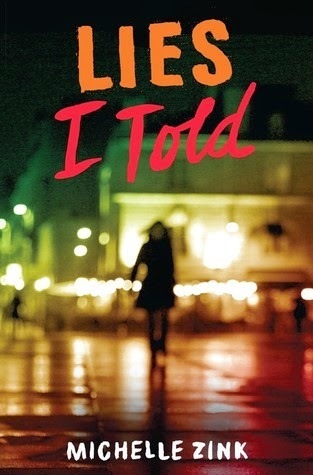
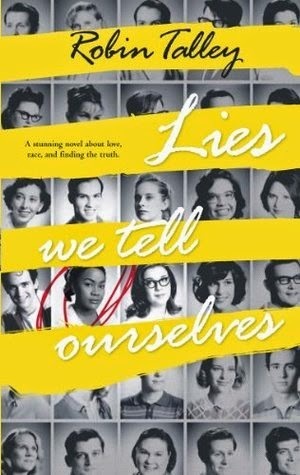

Lies I Told by Michelle Zink (April 7): Since Grace was adopted by the Fontaines, she has been carefully taught the art of the scam and has an uncanny ability to create a personality to help her "parents," but their latest job has her questioning everything she has been taught and the family she has grown to love.
Lies We Tell Ourselves by Robin Talley: In 1959 Virginia, Sarah, a black student who is one of the first to attend a newly integrated school, forces Linda, a white integration opponent's daughter, to confront harsh truths when they work together on a school project.
We Were Liars by E. Lockhart: A beautiful and distinguished family. A private island. A brilliant, damaged girl; a passionate, political boy. A group of four friends -- the Liars -- whose friendship turns destructive. A revolution. An accident. A secret. Lies upon lies. True love. The truth. Spending the summers on her family's private island off the coast of Massachusetts with her cousins and a special boy named Gat, teenaged Cadence struggles to remember what happened during her fifteenth summer.
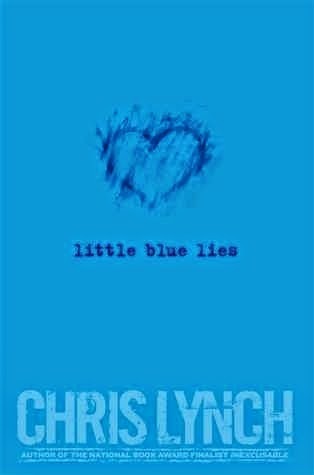
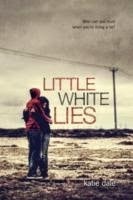
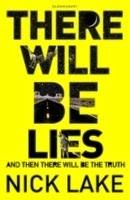
Little Blue Lies by Chris Lynch: Oliver, known as "O", and his suddenly ex-girlfriend Junie are are known for telling little lies, but one of Junie's lies about not winning the lottery could get her into trouble with a local mob boss.
Little White Lies by Katie Dale: The first time Lou meets mysterious Christian, she knows he is The One. But when Christian's secret is unveiled in front of the whole world, it seems everything he's ever told Lou is a lie, and Lou finds herself ensnared in a web of deceit.
There Will Be Lies by Nick Lake: Shelby Cooper, nearly eighteen, has been overprotected by her single mother all her life but after a car accident, Shelby's mother steals her away from the hospital, revealing that Shelby's father is not dead, but rather a violent man who promised to hunt them down.
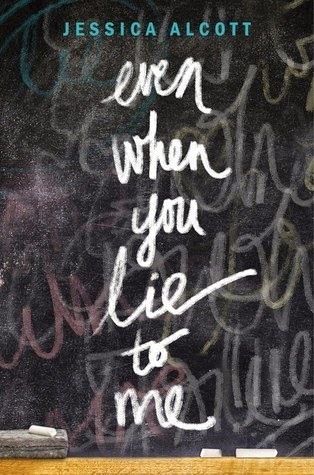
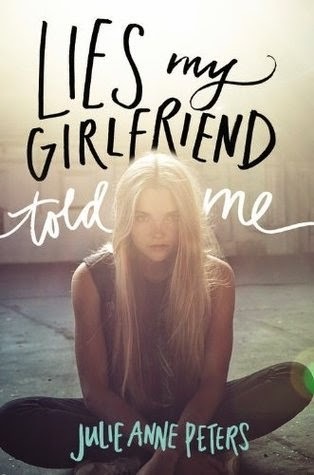
Even When You Lie To Me by Jessica Alcott (June 9): Because she sees herself as ugly and a misfit, tolerated only because of her friendship with pretty and popular Lila, Charlie dreads her senior year but a crush on the new charismatic English teacher, Mr. Drummond, makes school bearable until her eighteenth birthday, when boundaries are crossed.
Lies My Girlfriend Told Me by Julie Anne Peters: When her girlfriend dies suddenly at age seventeen, Colorado teenager Alix struggles with grief as painful secrets are revealed.
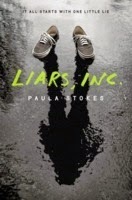
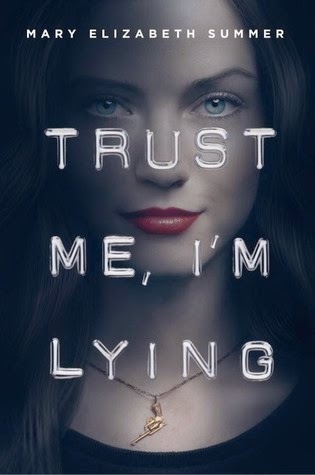
Liars, Inc. by Paula Stokes (March 24): Seventeen-year-old Max, his girlfriend Parvati, and best friend Pres form Liars, Inc., expecting that forging notes and lying for their peers will lead to easy cash, but when Pres asks Max to cover for him, it may be a fatal mistake.
Trust Me, I'm Lying by Mary Elizabeth Summer: Having learned to be a master con artist from her father, Julep Dupree pays expenses at her exclusive high school by fixing things for fellow students, but she will need their help when her father disappears.
Want more liars? Here's a round-up of older titles where lying liars who lie have some space to themselves in their titles. I learned that lies come in so many different colors while putting this together.


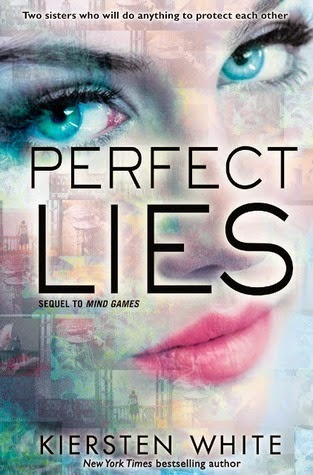
Liar by Justine Larbalestier: Compulsive liar Micah promises to tell the truth after revealing that her boyfriend has been murdered.
Lies by Michael Grant (part of a series): As conditions worsen in the FAYZ, where supernatural forces have trapped children under the age of fifteen and resources are running out, it becomes tempting to heed the words of a prophet who says that only death will set them free.
Perfect Lies by Kiersten White (part of a series): Sisters Anie and Fia have had their abilites manipulated by the Keane Foundation for too long--and now they're ready to fight back against the twisted organization that has been using them as pawns.
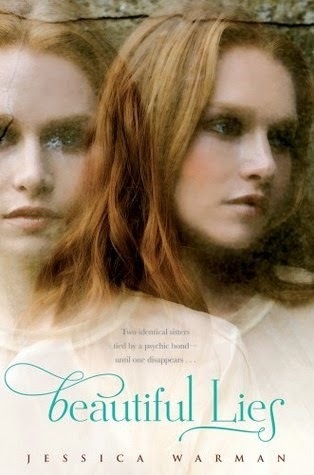
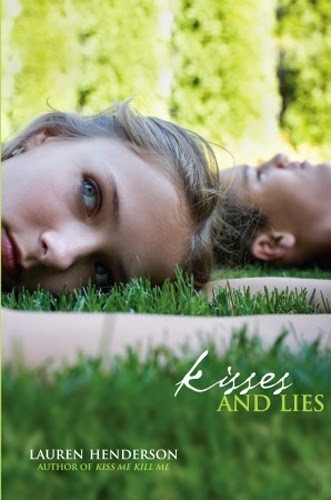

Beautiful Lies by Jessica Warman: Eighteen-year-old identical twins Alice and Rachel have always shared a very special bond, so when one is abducted the other uses their connection to try to locate her.
Kisses and Lies by Lauren Henderson: Orphaned British teenager Scarlett Wakefield postpones her romance with the handsome son of the school groundskeeper in order to travel to Scotland with her American sidekick, Taylor, in search of clues to the murder of a boy who dropped dead after kissing Scarlett.
Sweet Little Lies by Lauren Conrad (part of a series): Now a reality show celebrity, nineteen-year-old Jane Roberts learns that not all of her new friends are trustworthy.
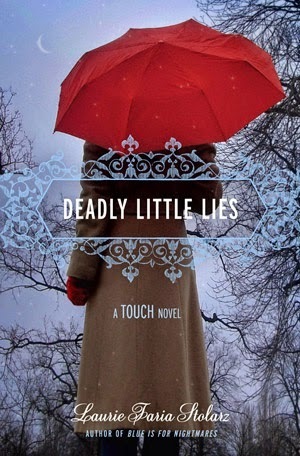
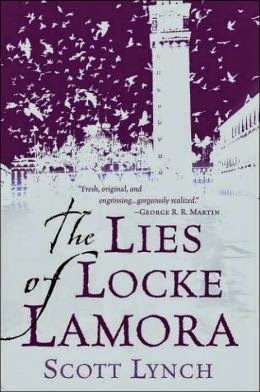

Deadly Little Lies by Laurie Faria Stolarz (part of a series): Camelia, who has recently discovered she shares her crush Ben's power of psychometry, finds herself in a tortured love triangle when a figure from Ben's past arrives and Camelia learns that both boys are hiding dangerous secrets.
The Lies of Locke Lamora by Scott Lynch: Vowing to bring down the crime boss running the city, a group of Gentlemen Bastards, led by Locke Lamora, sets out to beat the Capa at his own game, taking on other thieves, murderers, beggars, prostitutes, and thugs in the process.
Little Black Lies by Tish Cohen: Starting her junior year at an ultra-elite Boston school, sixteen-year-old Sara, hoping to join the popular crowd, hides that her father not only is the school janitor, but also has obsessive-compulsive disorder.
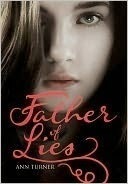
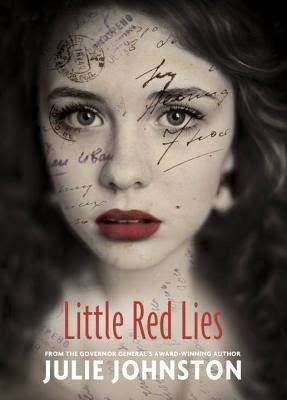
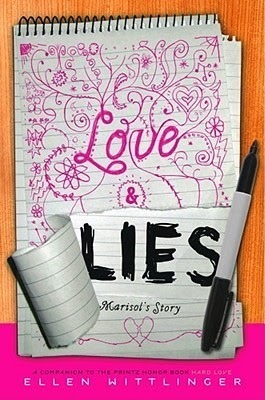
Father of Lies by Ann Turner: In 1692 when a plague of accusations descends on Salem Village in Massachusetts and "witch fever" erupts, fourteen-year-old Lidda, who has begun to experience visions and hear voices, tries to expose the lies of the witch trials without being hanged as a witch herself. Includes author's notes about the Salem Witch Trials and bipolar disease.
Little Red Lies by Julie Johnston: The war is over, but for thirteen-year-old Rachel, the battle has just begun. Putting childhood behind her, she knows what she wants - to prove she has acting talent worthy of the school drama club, and what she doesn't want - to romantically fall for someone completely inappropriate. Worries about her veteran brother's failing health and repugnance at her mother's unexpected and unwanted pregnancy drive her to seek solace from a seemingly sympathetic, but self-serving teacher. The lies she tells herself hoping to reach solutions to the problems complicating her life merely function to make matters worse. Ultimately, she finds a way to come to terms with life as it reaches an end and life as it begins.
Love & Lies by Ellen Wittlinger: When Marisol, a self-confident eighteen-year-old lesbian, moves to Cambridge, Massachusetts to work and try to write a novel, she falls under the spell of her beautiful but deceitful writing teacher, while also befriending a shy, vulnerable girl from Indiana.
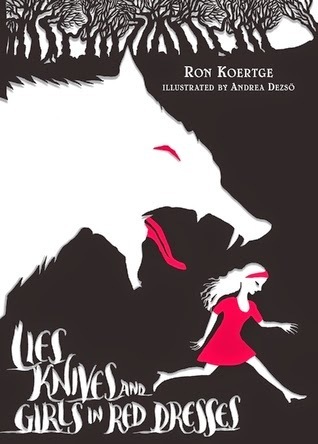


Lies, Knives, and Girls in Red Dresses by Ron Koertge: Free-verse reveals true stories behind well-known fairy tales, some reset in modern times, as a strung-out match girl sells CDs to drug users, Little Red Riding Hood admits that she wanted to know what it is like to be swallowed whole, and Cinderella's stepsisters are duped.
Pretty Little Liars by Sara Shepard (series): When one of their tightly-knit group mysteriously disappears, four high school girls find their friendship difficult to maintain when they begin receiving taunting messages from someone who seems to know everything about their past and present secrets.
The Liar Society by Lisa and Laura Roecker (series): When Kate receives a mysterious e-mail from her dead friend Grace, she must prove that Grace's death was not an accident, but finds that her elite private school holds secrets so big people are willing to kill to protect them.
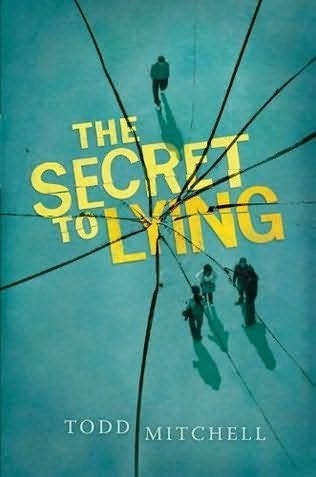
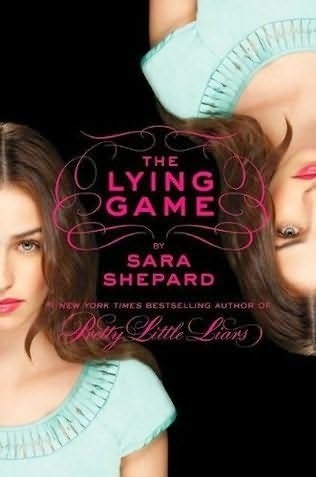
The Secret to Lying by Todd Mitchell: Fifteen-year-old James lies about himself to be considered "cool" when he gets into an exclusive boarding school, but soon unnaturally vivid dreams of being a demon-hunting warrior lead to self-destructive acts while he is awake.
The Lying Game by Sara Shepard (series): Seventeen-year-old Emma Paxton steps into the life of her long-lost twin Sutton to solve her murder, while Sutton looks on from her afterlife.







 Related StoriesJanuary Debut YA NovelsOn Grief and Finding Love Unexpected: The Boy in the Black Suit by Jason Reynolds and The Carnival at Bray by Jessie Ann FoleyGet Genrefied: YA Memoirs
Related StoriesJanuary Debut YA NovelsOn Grief and Finding Love Unexpected: The Boy in the Black Suit by Jason Reynolds and The Carnival at Bray by Jessie Ann FoleyGet Genrefied: YA Memoirs
Published on January 18, 2015 22:00
January 15, 2015
This Week at Book Riot
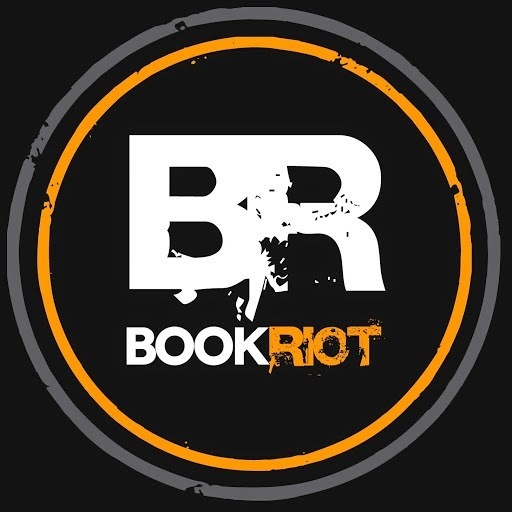
Here's a look at what I tackled over on Book Riot this week...
If you're wondering what series books are continuing or launching in 2015 for YA, then you'll want to use this list. It's long, but I tried organizing it by on-going and new series, as well as by rough publication date. (I actually thought it would be a lot longer, especially for new series).
This week's "3 On A YA Theme" is all about YA books with candy on the cover, in honor of National Candy Month.







 Related StoriesThis Week at Book RiotThis Week Around The WebThis Week on Book Riot & The Book Smugglers
Related StoriesThis Week at Book RiotThis Week Around The WebThis Week on Book Riot & The Book Smugglers
Published on January 15, 2015 22:00



